Cryptocurrency has raised exposure to innovative concepts and opportunities, changed economic paradigms, and become the “new economy.” Although cryptocurrencies are becoming increasingly familiar in every corner of the world, crypto volatility is just like nothing before. Currency can play for bigger profits or, on the other hand, greater losses in a very short time. Understanding the nature of Bitcoin and other crypto volatility is important.
- What is Crypto Volatility?
- Measurement of Crypto Volatility
- The Importance of Crypto Volatility
- Can We Reduce Crypto Volatility?
- An Overview of Bitcoin Crashes in The Past
- Bitcoin Crashed From 32 USD to 0.01 USD in 2011
- Bitcoin Crashed From $1,000 to $200 in 2015
- Bitcoin Falls Below $3,200 After Reaching $20,000 in December 2017
- Bitcoin Drops From $63,000 to $29,000 in 2021
- Bitcoin Plummets From $68,000 to Below $20,000 in 2022
- Conclusion
Crypto volatility means the unpredictable price nature of the cryptocurrency market. Bitcoin has a history of great price volatility in bursts with periodic crashes. Market sentiment, regulatory changes, and macroeconomic factors cause sudden big drops in its price.
What is Crypto Volatility?
Volatility measures the amount of an asset’s price that has fluctuated over time. In general, the volatility of an asset indicates how risky the investors perceive it to be and how much potential it exhibits for delivering higher returns or bigger losses over time horizons of shorter duration than the relatively less volatile money.
As cryptocurrencies are a relatively new asset class, they are commonly viewed as having potentially huge gains and losses in short periods. The digital assets possess high volatility, as in the case of “penny stocks,” to relatively quieter large-cap corners. On the other hand, bonds show lower volatility, where they normally move less sharply up or down over long periods.
Measurement of Crypto Volatility
When measuring volatility, it commonly refers to “historical volatility,” resulting from the analysis of prices on a given period, usually 30 days back, a year or more. Because the future is impossible to predict with certainty, the science of “implied volatility” — which offers an educated guess about what’s to come – stands as far less exact even as it serves as the foundation for such popular financial tools as the Cboe Volatility Index, often termed the “fear index” because it predicts stock market volatility over the next 30 days.
There are two methods for quantifying crypto volatility:
- One way to do this is to employ beta, The beta measures how volatile a stock is relative to the entire market (usually using the S&P 500 for that gauge).
- The standard deviation of an asset, which indicates how much its price has deviated from its historical average, can be calculated.
The Importance of Crypto Volatility
Volatility is among the main elements used to determine a particular investment’s risk. Normally, investors take on quite a bit of risk if the potential gain from an investment is such that there is an equal chance that the investor might lose some of the initial investment. (Everything they’d invested is gone — as in the case of high-risk hedge-fund manager Bill Hwang, whose entire $20bn fund vanished in two days.)
If anything, the retail investor usually has it as a mantra that they should be aware that they should diversify risk by spreading their holdings within an asset class. One typically well-liked way is investing in an index fund or a basket of stocks instead of buying a select few. This may also be coupled with diversification of investments in low volatile assets, such as bonds, at the same time as they have investments in more volatile asset categories, such as stocks, to minimize even further the chances of any investment giving negative returns.
Despite the cryptocurrency asset class being only a bit over a decade old, which has led to numerous very sharp run-ups followed by retrenchments and considered as, on balance, more volatile than stocks the increased trading volumes and greater institutional participation witnessed in Bitcoin, the largest cryptocurrency by market capitalization, appear to be diminishing its volatility over time. When trying emerging crypto assets like DeFi tokens or cryptocurrencies with lower trading volumes, it’s best practice to risk amounts you can afford to lose, as these are usually experiences with higher volatility.
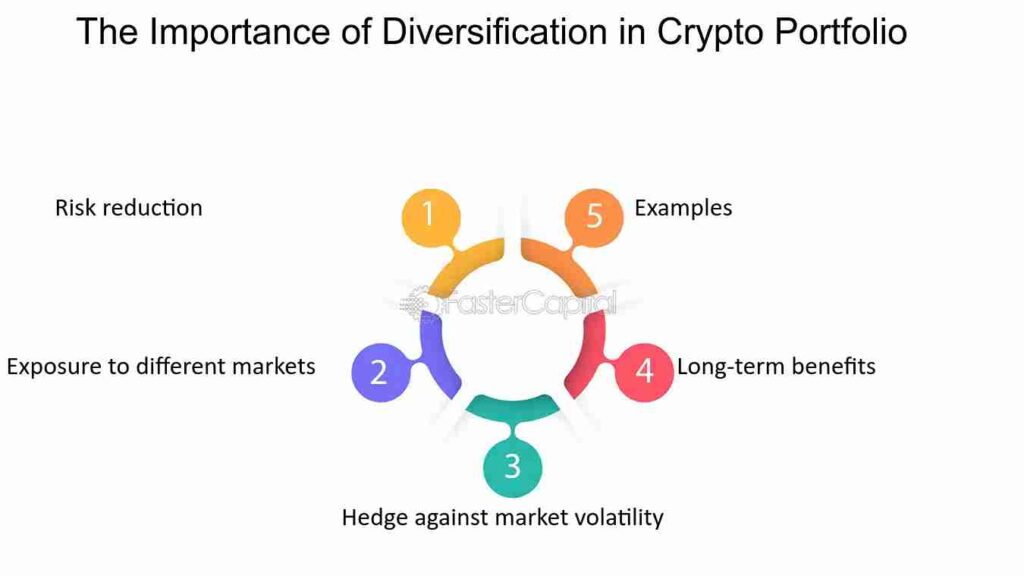
Crypto volatility arises from positive or negative news coverage and better or worse than estimated quarterly results. Crypto volatility is primarily attributed to irregular spikes, such that the level of trading volume can be exceptionally high. Low volume normally means high crypto volatility, such as dealing with smaller cryptocurrencies or penny stocks not traded on major markets.
Can We Reduce Crypto Volatility?
And while its crypto volatility has been decreasing of late, bitcoin often moves by double-digit percentage amounts in a single week, presenting ample opportunity for tactics such as “buying the dip.” Moreover, its high crypto volatility makes it attractive to some cryptocurrency investors as it gives the potential for big returns.
Dollar-cost averaging can reduce the negative effects of crypto volatility for less risk-tolerant people. Longer-term investors generally do not pay as much need to concern themselves with short-term fluctuations because they have every reason to believe that an investment will eventually rise over time. Stablecoins, such as USD Coin and Dai, are less volatile cryptocurrencies – their value is set to some reserve asset, such as the US dollar.
An Overview of Bitcoin Crashes in The Past
In 2022, Bitcoin (BTC) saw one of the worst crashes in history, with the price of BTC falling below $20,000 in June 2022, following a peak of $68,000 in November 2021. Since September 2011, June 2022 has been the worst month for Bitcoin due to monthly losses that have reached 40%.
Additionally, the cryptocurrency reported its worst quarterly losses in eleven years. Nevertheless, bear markets and Bitcoin crashes are not limited to 2022 due to the present market sell-off. In fact, since the genesis block—the first block of Bitcoin—was mined in January 2009, the cryptocurrency has witnessed its fair share of crypto winters. When we pan out the Bitcoin price chart, we can find the following five most significant price drops in its history.
Bitcoin Crashed From 32 USD to 0.01 USD in 2011
In April 2011, the price of Bitcoin broke through its first significant psychological barrier of $1, igniting the first-ever rally that saw it reach $32 on June 8, 2011. Happiness, however, was short-lived as the value of Bitcoin then crashed, bottoming out at just $0.01 over a few days.
The sharp sell-off was mainly instigated by security flaws at the now-defunct Mt. Gox, a Japanese cryptocurrency exchange that conducted the majority of Bitcoin trades then. The theft of 850,000 BTC was a security breach in the exchange’s platform, raising serious questions about the safety of Bitcoin that it staked on exchanges.
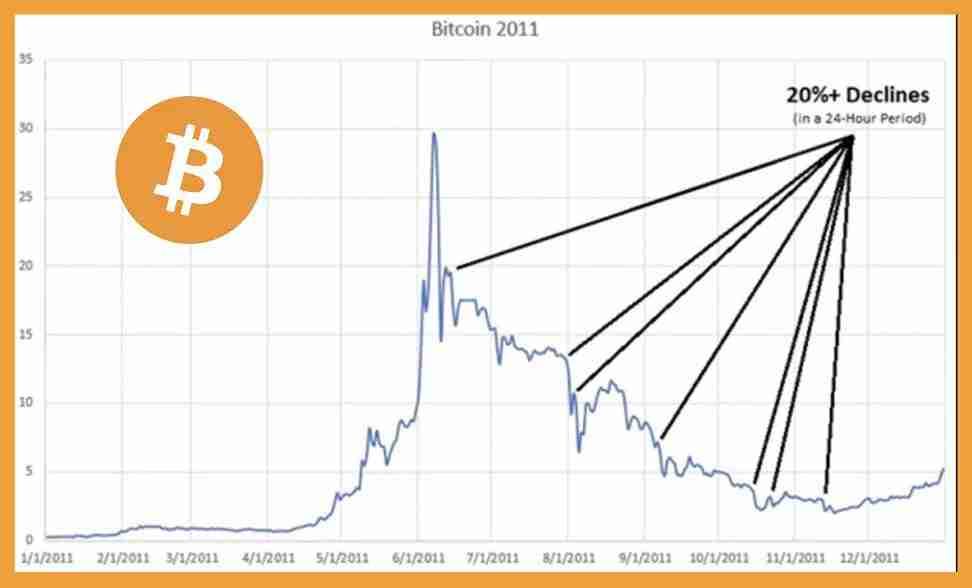
The flash crash in June 2011 kept that part of the significant Bitcoin history when BTC lost almost 99% of its value through a very short period, measured in a few days. The event started long before Bitcoin bounced its price back to the previous high of $32, and new all-time highs were reached in February 2013.
Trying to follow pre-2013 Bitcoin price charts is akin to comparing them with more recent ones. Established lineament price tracking services or websites such as CoinGecko, for instance, or CoinMarketCap did not track prices of the Bitcoin before April 2013.
Bitcoin Crashed From $1,000 to $200 in 2015
Data on BTC price depicts that Bitcoin peaked in mid-April 2013 at $100. Riding up ever since for the first time in history, it touched $1,000 in November of 2013.
Top 5 Tips For Newbie Bitcoin Investors: Here’s What You Need To Know
Less than a month after crushing the $1,000 barrier for the first time, Bitcoin embarked on one of its most savage bear market runs in history. The decline in value coincided with the crackdown on Bitcoin by the Chinese central bank in late 2013, which prohibited regional financial institutions from processing transactions involving the said cryptocurrency.
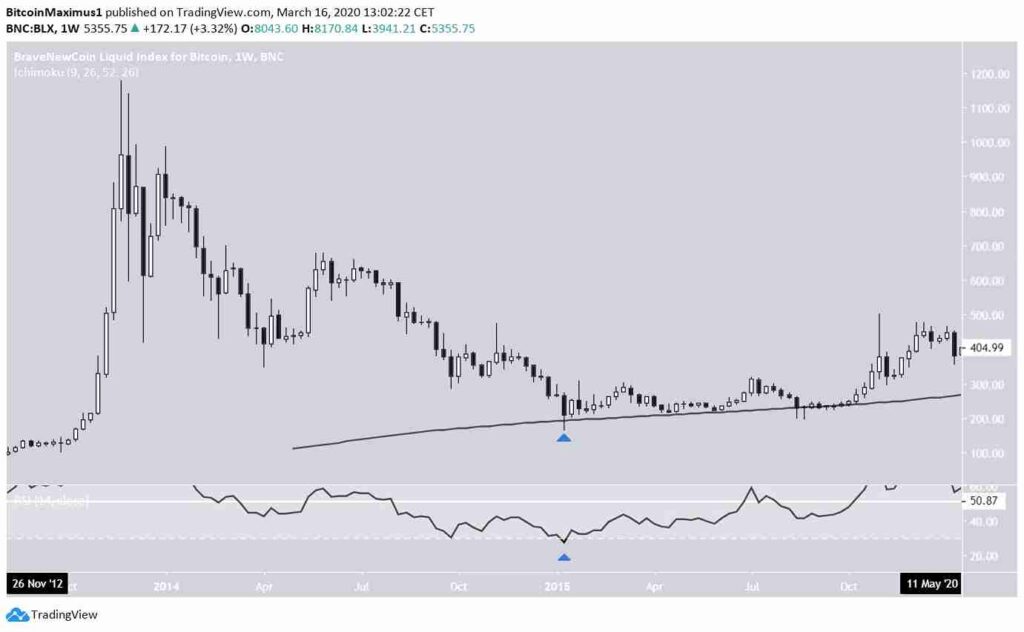
Prices of the cryptocurrencies continued to spiral down in the ensuing two years, hitting a low of $170 in January 2015 after first bottoming out at around $360 in April 2014.
December of 2013 ushered in the extended cryptocurrency winter of 2014, linked to the compromised Mt. Gox cryptocurrency exchange that was refusing Bitcoin withdrawals during the first few days of February 2014 – any trades made with the platform stopped after this point and ultimately ended in bankruptcy between the US and Tokyo.
Several other leading financial authorities around the world also aired concerns regarding Bitcoin. In 2014, late in the year, the U.S. Commodity Futures Trading Commission claimed its authority over “Bitcoin price manipulation.”
Before a long-term trend started a reversal in August 2015, the general sentiment concerning Bitcoin was mostly bearish. In January 2017, between a healthy bull market, for the first time since then, the price of Bitcoin reached $1,000 again. In the history of Bitcoin, this was the longest price recovery period from an all-time high.
Bitcoin Falls Below $3,200 After Reaching $20,000 in December 2017
In January 2017, Bitcoin recovered to $1,000, and by the end of the year, it had reached a high of $20,000.
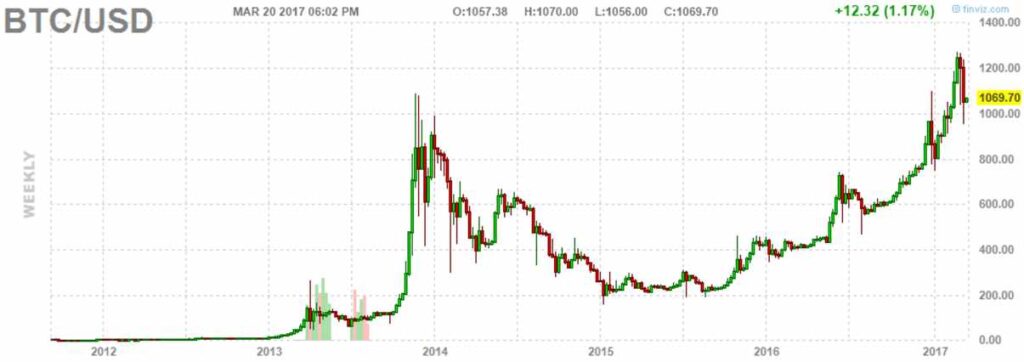
However, similar to the $1,000 high in the history of Bitcoin, its triumph of $20,000 was short-lived as the cryptocurrency plummeted and lost over 60% of its value in just months.
So, the Bitcoin market decided to continue its way down in 2018, and the year with lightning speed soon was christened on exchanges as “crypto winter” – by December 2018, bitcoins fell only to a low of about 3,200 dollars.
Alarm bells for the commencement of the crypto winter were ringing over security concerns at Coincheck, another Japan-based cryptocurrency exchange. Coincheck was hit by a massive hack in January 2018, which resulted in the loss of around $530m NEM (NEM) cryptocurrency.
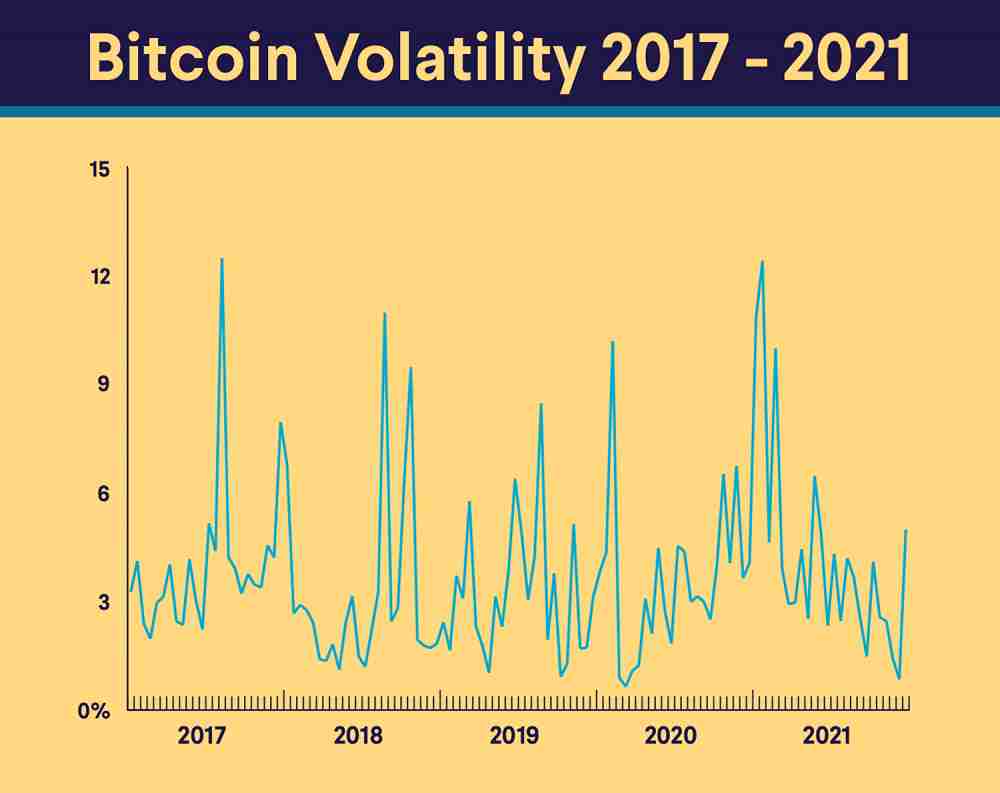
The bear market worsened when the tech giants Facebook and Google issued bans on ads for initial coin offerings and token sales in March and June 2018, respectively.
One of these initiatives contributing to the bear market was the U.S. Securities and Exchange Commission’s decision to reject applications for Bitcoin exchange-traded funds.
Bitcoin Drops From $63,000 to $29,000 in 2021
However, until 2020, the cryptocurrency market was mostly bearish, as with the retracing of Bitcoin to $20,000 – and more so in the latter half of 2018 to $3,000 – it started a new massive bull run that outpaced every other run before it and peaked at above $63k in April 2021.
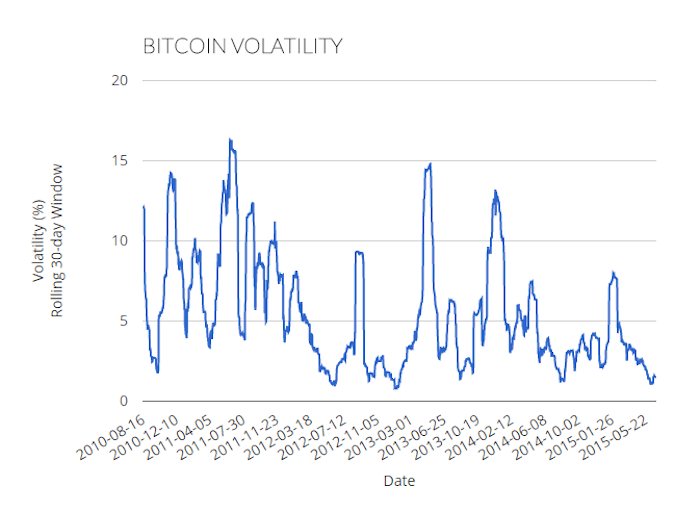
Despite the slight setback, it became one of the crucial years for Bitcoin in which the cryptocurrency crossed the $1 trillion market cap.
After hitting new highs in mid-April, Bitcoin drew back a little but dropped its price to as low as $29,000 in three months.
The 2021 mini-bear market came with a growing media narrative insinuating that there are some environmental, social, and corporate governance (ESG) problems posed by Bitcoin mining.
The global ESG-related FUD around Bitcoin became even louder when Tesla, Elon Musk’s electric car company, dumped Bitcoin as payment in May on ESG concerns. Just three months later, Musk admitted that about half of Bitcoin mining was powered by renewable energy.
The bear market was short-lived despite a major crackdown on local mining farms that followed China. The bullish trend had returned by the end of July, and eventually, Bitcoin would go up to its still-unbroken all-time high of $68,000 set in November 2021.
Bitcoin Plummets From $68,000 to Below $20,000 in 2022
Bitcoin failed to break through above $70,000 and started declining in late 2021. Since the November season of last year, cryptocurrency has been experiencing a bear market with its largest historical crashers during December 2022.
In June, the cryptocurrency fell below $20,000 for the first time since 2020, fueling market panic.
The crisis of algorithmic stablecoins happens with the TerraUSD Classic (USTC) stablecoin being held to a 1:1 peg against US dollars through blockchain algorithms instead of equivalent cash reserves.

USTC, a major algorithmic stablecoin, lost its dollar peg in May. One of the most violent de-pegging saw USTC end as it skyrocketed to break into the podium of the third-largest stablecoins before it faced its demise.
A cryptocurrency lending crisis fueled huge liquidations and uncertainty caused by the Terra consortium, and the former had a domino effect on the rest of the cryptocurrency market.
Conclusion
The history of Bitcoin crashes is a crypto volatility story and has elements of resilience, adaptation, and growth. In creating one’s path through the cryptocurrency markets’ bumpy ride, treading with some nuance on how they come about will be critical. Learning from the past, appreciating the impact of human behavior, and vigilantly standing in touch with regulatory and technological shifts can provide investors with more confidence and resilience in navigating the crypto landscape.




















